Bid proposal cover letter template
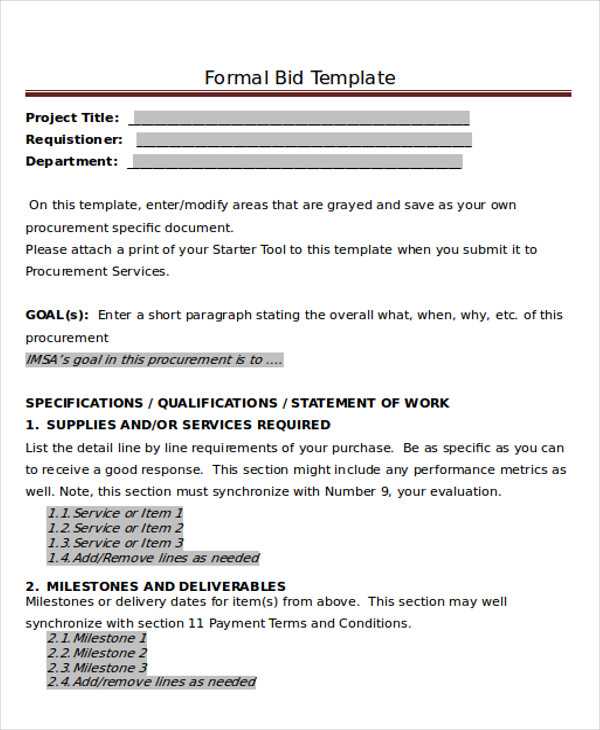
A well-crafted bid proposal cover letter sets the tone for your proposal and leaves a lasting impression. Keep it brief but impactful–highlight your understanding of the client’s needs and your ability to provide the best solution. Focus on clarity and make sure every word adds value.
Start with a clear statement of your intent. Express enthusiasm about the opportunity and why you’re the right choice for the project. Highlight your experience or qualifications that directly relate to the client’s requirements, and show how your proposal aligns with their goals.
Include specific details, such as your unique approach to the project or any key differentiators that set you apart from competitors. Ensure that you’re conveying a sense of reliability and trustworthiness. The goal is to inspire confidence in your ability to execute the project successfully.
Conclude by offering a next step, whether it’s a follow-up call or meeting, and thank the recipient for their consideration. Keep the tone professional but approachable, leaving room for continued conversation and collaboration.
Bid Proposal Cover Letter Template
A strong bid proposal cover letter should be clear, concise, and tailored to your client’s specific needs. Keep it professional but approachable. Below is a template that highlights the key sections you should include:
- Introduction: Begin by stating the purpose of the letter. Mention your company name and the project you’re bidding for.
- Overview of Your Company: Provide a brief description of your company, highlighting relevant experience or expertise related to the project.
- Proposal Summary: Summarize your approach to the project. Highlight how your solution aligns with the client’s goals and needs.
- Key Benefits: Focus on what sets you apart from other bidders. Mention specific advantages, such as efficiency, innovation, or cost savings.
- Closing: Thank the client for the opportunity. Provide contact details for further communication and express your willingness to discuss the proposal in more detail.
Here’s a simple layout based on these sections:
[Your Name] [Your Title] [Your Company Name] [Your Address] [City, State, Zip Code] [Phone Number] [Email Address] [Date] [Client Name] [Client Title] [Client Company Name] [Client Address] [City, State, Zip Code] Dear [Client Name], I am writing to submit our bid proposal for [Project Name]. We at [Your Company Name] have reviewed your project requirements thoroughly and are excited about the opportunity to contribute our expertise in [specific service or product offered]. We have extensive experience in [relevant field], having successfully completed similar projects, such as [example projects or outcomes]. Our team is confident in our ability to deliver exceptional results for [Client Company Name], on time and within budget. Our proposal includes [brief summary of your proposed solution], which we believe will address your needs by [key benefits]. We are particularly proud of [specific advantage of your approach]. Thank you for considering our bid. Should you have any questions or need further details, I would be happy to discuss our proposal with you at your convenience. I look forward to the possibility of working together. Sincerely, [Your Name] [Your Title] [Your Company Name]
This template covers the essentials of a bid proposal cover letter while keeping it brief and professional.
How to Format the Heading and Salutation
The heading and salutation are key elements of a bid proposal cover letter. Get them right, and you’ll set a professional tone for the rest of the document.
1. Formatting the Heading
The heading typically includes your contact details, the date, and the recipient’s information. Here’s a simple order to follow:
- Your name, job title, and company name (if applicable) at the top.
- Follow with your contact information: phone number, email address, and mailing address.
- Next, include the date of the letter.
- Then, write the recipient’s name, job title, and company name.
- End with the recipient’s address.
Ensure all details are aligned neatly on the left-hand side. Double-check spelling, especially of names and addresses, as small errors can impact your credibility.
2. Formatting the Salutation
The salutation should be formal and direct. Address the recipient by their proper title (e.g., Mr., Mrs., Dr., or their job title if you’re unsure about their gender). Use the last name unless you know the person well enough to use their first name.
- If you know the recipient’s name: “Dear Mr. Smith” or “Dear Dr. Johnson.”
- If you don’t know the name, use “Dear Hiring Manager” or “Dear [Company Name] Team.”
Keep the salutation polite and professional. If you’re unsure, it’s better to err on the side of formality.
Key Information to Include in the Opening Paragraph
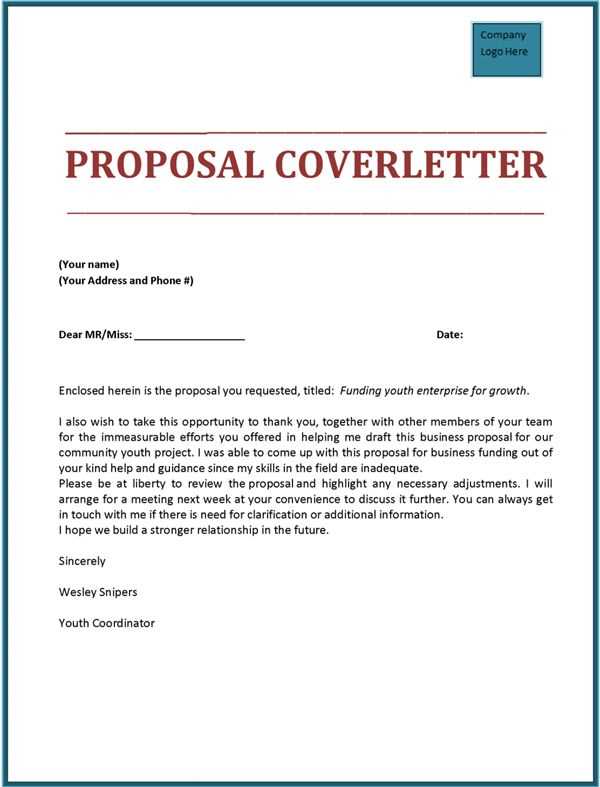
Begin your bid proposal cover letter with a clear introduction that immediately addresses the recipient by name or title, if possible. This shows professionalism and personalization right from the start. State the specific project or opportunity you are applying for, referencing any relevant project ID or title to make your intent obvious.
Next, briefly mention your understanding of the client’s needs or the challenges the project aims to address. This demonstrates that you’ve done your homework and understand the goals. Finally, provide a snapshot of your qualifications or experience that directly relate to the project at hand. This sets the stage for the rest of the proposal, ensuring the reader knows you are a fit for the job from the outset.
Presenting Your Qualifications and Experience Clearly
Focus on the skills and experience most relevant to the project. Highlight specific accomplishments and demonstrate how they align with the client’s needs. Be concise, but provide enough detail to show your expertise. Avoid vague statements–quantify your achievements wherever possible.
Show How You Solve Problems
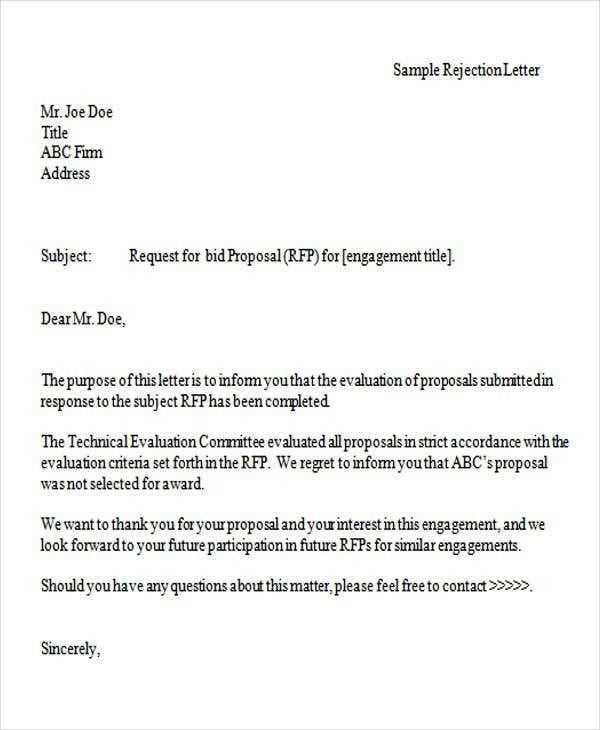
Clients want to know how your experience will directly benefit them. Use examples that show how you’ve tackled challenges in the past. Explain your problem-solving process and link it to the outcomes you delivered. This shows that you can apply your experience to meet their unique requirements.
Tailor Your Experience to the Project
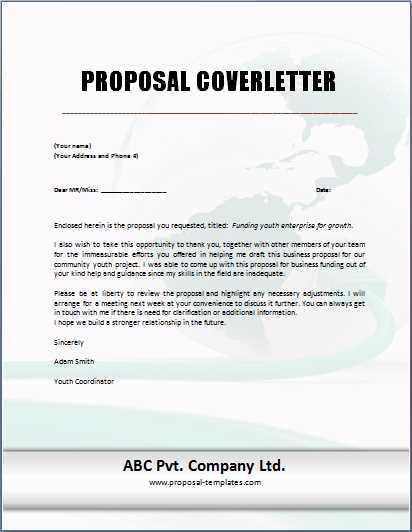
Don’t use a generic description of your qualifications. Instead, select experiences that are most relevant to the specific needs of the project. If you have worked in the same industry or have handled similar projects, point that out. This reinforces your ability to deliver the expected results with confidence.
Incorporate specific skills or certifications that directly apply to the project. If there are technical requirements or tools mentioned in the bid, make sure to reference your proficiency with those technologies. Demonstrating your expertise in these areas establishes credibility and reassures the client that you can handle the scope of work.
End this section with a clear statement of how your qualifications will bring value to the client. This reinforces your fit for the project and invites them to take the next step in considering your proposal.
How to Customize the Template for Specific Projects
Focus on aligning the cover letter with the project’s objectives and the client’s expectations. Tailor the introduction to reflect the project’s specific needs and your experience in addressing similar challenges. Customize the language to mirror the tone and style of the project description or proposal request.
Start by changing the opening paragraph to demonstrate how your skills meet the exact requirements outlined in the request for proposal (RFP). Highlight relevant experience, achievements, or skills that directly relate to the project’s goals. If the project is about construction, emphasize relevant projects and your expertise in handling similar scopes.
Adjust the second section to describe your understanding of the project’s scope. Use clear, direct language to show that you’ve analyzed the requirements and can deliver the expected results. This is the section where you showcase your knowledge of the industry and how it relates to the specific project.
Make sure to modify the conclusion by focusing on the client’s specific needs and how you plan to address them. Avoid generic phrases; instead, demonstrate commitment to the project’s success. Mention a follow-up step, such as a call or meeting, to discuss further details.
| Template Section | Customizing Tips |
|---|---|
| Introduction | Personalize by highlighting your relevant experience for the specific project type. |
| Project Understanding | Match your language to the project’s scope and use details from the RFP to show you grasp the client’s needs. |
| Conclusion | End with a clear call to action or next steps tailored to the client’s timeline and expectations. |
Finally, ensure that any specific terms or jargon used in the proposal are consistent with the client’s preferred terminology. This demonstrates attention to detail and a willingness to engage with the project on a deeper level.
Best Practices for Expressing Interest and Commitment
Directly acknowledge your enthusiasm for the project by referring to specific aspects of the proposal or the company’s goals that align with your expertise. Highlight how your skills and experience can contribute to the success of the project.
Be clear about your intention to deliver results by mentioning key actions you’ll take. This shows you are ready and capable of executing the project as promised.
Use confident, straightforward language to express your commitment. Instead of vague statements, specify the steps you will take to meet deadlines or exceed expectations. This will make your proposal more compelling and trustworthy.
Make it clear that you understand the scope and importance of the work. Acknowledge any challenges that may arise and briefly outline how you’ll address them. This approach demonstrates your readiness and problem-solving capabilities.
Lastly, express your openness to communication and collaboration. Mention that you’re available to discuss any details further, and emphasize your willingness to work closely with the team throughout the project.
How to Close the Letter Professionally with a Call to Action
Conclude your bid proposal with a clear, actionable next step. Invite the reader to respond or take the next action in the process, like scheduling a meeting or requesting more information. A well-placed call to action keeps the momentum going and sets expectations for the next step.
Be Direct and Specific
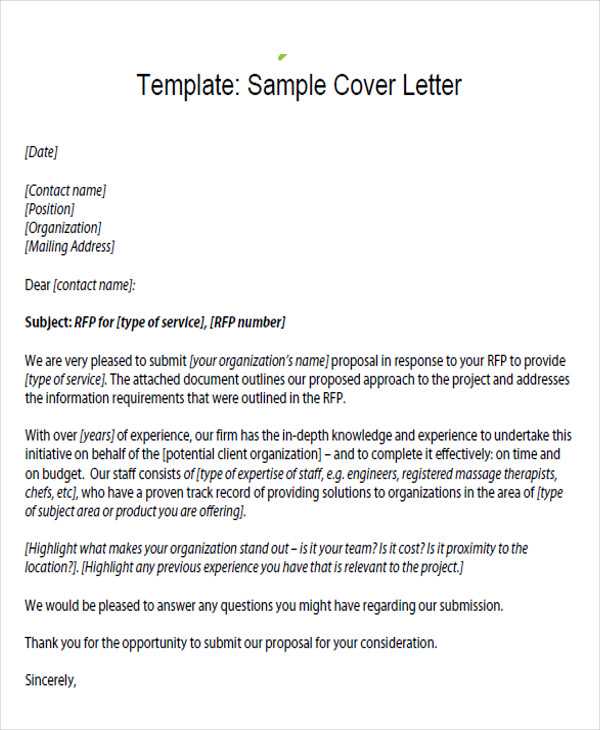
Avoid vague phrases like “Let me know if you’re interested.” Instead, specify what you want to happen next. For example, “Please feel free to contact me at your earliest convenience to discuss the proposal further” or “I look forward to scheduling a meeting next week to explore how we can collaborate.” This gives your reader a clear idea of how to move forward.
Express Confidence and Gratitude
End your letter with a tone of assurance, letting them know you’re ready to engage. A closing line like “I’m confident our proposal will meet your needs and look forward to your response” communicates both confidence and professionalism. Also, express appreciation: “Thank you for considering this proposal” helps to end on a positive note.